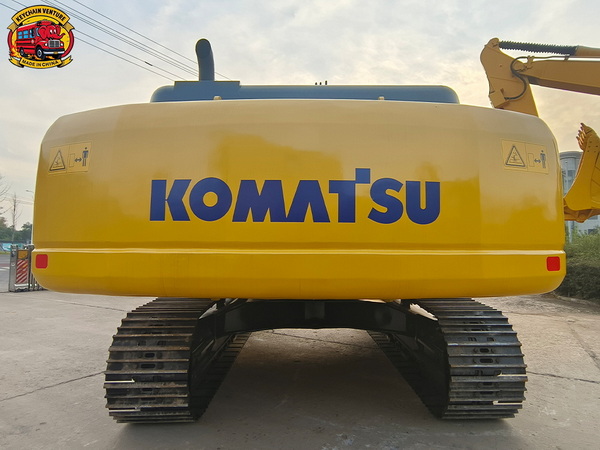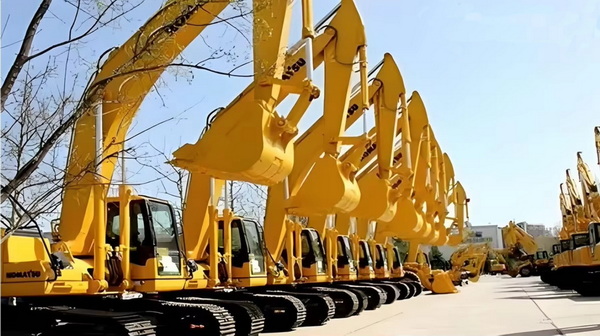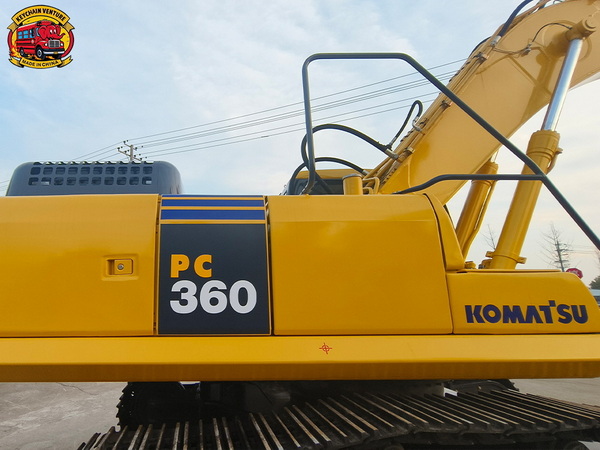Views: 222 Author: Amanda Publish Time: 2025-11-04 Origin: Site








Content Menu
● Understanding the final drive lubrication system
● Choosing the right oil for the final drive
● Viscosity selection by operating context
● Maintenance and service intervals
● On-site implementation: drain, refill, and verification
● Signs that indicate immediate attention
● Practical tips for Used Excavator fleets
● Operational considerations for the global market
● FAQ
>> 1: What is the recommended oil for excavator final drive under normal conditions?
>> 2: When should SAE 85W-140 be used in the final drive?
>> 3: How often should final drive gear oil be changed on a Used Excavator?
>> 4: Can hydraulic fluid be used in the final drive?
>> 5: What signs indicate it's time to change the final drive oil?
Lubrication is the lifeblood of any heavy machine, and for excavators, the final drive is one of the most critical components within that lubrication ecosystem. The final drive translates high-torque hydraulic power into rotational motion while reducing speed through a planetary gearset and bearings. Ensuring the correct oil in this subsystem is essential for minimizing wear, preventing overheating, and extending service life—especially for Used Excavator fleets where prior maintenance history may be uncertain. An informed oil choice supports reliability, reduces downtime, and protects resale value in a competitive market.

The final drive contains two primary lubrication domains that must be managed correctly to prevent misapplication and cross-contamination. First, the gear reduction chamber relies on a specialized gear oil to form a protective film between gears, bearings, and seals. Second, the hydraulic system, while not the same as gear oil, relies on circulating lubricants that indirectly influence the final drive's temperature and cleanliness through cooling and filtration paths. In many machines, the final drive is designed with its own reservoir, venting, and fill points, but some configurations integrate the final drive lubrication circuit with the machine's main lubrication system. The key takeaway for Used Excavator owners and operators is to treat the gear oil for the final drive as a distinct specification from the hydraulic fluid and to follow the manufacturer's lubrication chart for the exact grade and change intervals.
- Baseline recommendation: For typical operation, a mineral gear oil in the SAE 80W-90 range with API GL-5/MT-1-compatible formulations is commonly specified for many excavator final drives. This grade provides adequate film strength for hypoid gears and offers reliable wear protection in moderate temperatures.
- Heavier duty or extreme conditions: In hot climates, high-load cycles, or prolonged heavy-duty work, operators often prefer a thicker viscosity such as SAE 85W-140 to maintain film thickness and delay metal-to-metal contact under intense heat. Synthetic gear oils with high shear stability are also viable options when the OEM allows them, delivering better performance in demanding environments.
- Avoid mixing inappropriate fluids: Hydraulic oil is not a substitute for gear oil in the final drive. Mixing fluids can degrade lubrication properties, impair film formation, and lead to accelerated wear or seal damage. Always maintain distinct lubrication paths and use the oil specified for the final drive.
- Extreme pressure and anti-wear additives are typical in GL-5 formulations, helping protect gears under heavy loads and shock loads. For Used Excavator fleets, additive compatibility with seals and plastics in the final drive is important, so consult the OEM's compatibility notes if a switch is contemplated.
- Temperature stability and oxidation resistance extend oil life in demanding temperatures. Synthetic options can offer superior performance in extreme heat or cold, but only if the final drive design supports synthetic formulations.
- Normal operation in temperate climates: 80W-90 GL-5 or similar mineral gear oil is typically appropriate, balancing flow, protection, and cost for Used Excavator applications.
- Hot or extreme duty: 85W-140 or synthetic alternatives may be preferred to resist thinning at high temperatures and to preserve bearing life.
- Cold starts or low-temperature environments: Consider viscosity grades that maintain adequate film formation at low temperatures, but ensure the final drive's seals and components can tolerate the selected oil.
- Manufacturer guidance: Always begin with the machine's Operations and Maintenance Manual for exact oil grades, fill quantities, and change intervals. This ensures compatibility with the final drive's design and any specialized features such as oil coolers or integrated filtration.
- General guidance for Used Excavator fleets: Gear oil changes are commonly recommended annually or after a defined number of operating hours (for example, 500–1000 hours or more in light-use conditions, and more frequent changes in heavy-use scenarios). Oil analysis can inform whether a change is warranted sooner due to contamination or wear metals.
- Filtration and cleanliness: Maintaining clean oil and avoiding ingress of contaminants is crucial. Use clean funnels, sealed containers for oil transfer, and promptly replace filters if the final drive uses any internal filtration or external strainers.

- Preparation and safety: Ensure the machine is on level ground, powered down, and secured. Use appropriate PPE and have a pan ready to capture drained oil. Dispose of used oil responsibly following local regulations.
- Draining the old oil: Locate the drain plug at the lowest point of the final drive housing. Allow all oil to drain completely before removing any fill or vent plugs. Clean the area around plugs to prevent dirt ingress during drainage.
- Refilling: Refit the drain plug, then fill through the designated fill port until the oil begins to show at the level check point or reaches the recommended level as specified by the manual. Do not overfill, as excess oil can cause pressure buildup and seals to leak.
- Post-change checks: Run the machine briefly to circulate the new oil, then recheck the level with the machine in its specified posture. Inspect for leaks and signs of abnormal operation, such as unusual noises or overheating. If debris or metal in the drained oil is observed, schedule a more thorough inspection of gears and bearings.
- Milky or emulsified oil: Water ingress is damaging and needs prompt diagnosis of seals or cooling passageways.
- Metallic particles in oil: Indicates wear; an oil analysis or full gear inspection may be required to determine the source and seriousness.
- Unusual noises or vibration: Could signal misalignment, bearing wear, or insufficient lubrication due to oil grade or level issues.
- Consistently high operating temperatures: May reflect poor oil viscosity selection, blocked cooling paths, or inadequate lubrication, requiring corrective action.
- Documentation and standardization: Maintain a simple, repeatable oil specification chart for each unit or model line in the fleet. This minimizes confusion during maintenance and improves resale value by ensuring consistent service history.
- Inventory planning: Stock a primary grade (for example, SAE 80W-90 GL-5) alongside an alternate grade for extreme conditions, enabling quick response to varying operating environments without forcing a fluid changeover.
- Supplier relationships: Work with a reliable lubricant supplier who can provide OEM-approved gear oils and color-coded batch tracking to simplify inventory and compliance, especially when managing multiple Used Excavator units across locations.
- Training for operators and technicians: Provide clear, visual maintenance checklists that cover oil level checks, leak detection, and signs of contamination. Regular hands-on training reduces the risk of missteps during oil changes.
- Used Excavator markets demand clear maintenance narratives that connect reliability with resale value. A well-documented lubrication strategy that adheres to manufacturer recommendations signals quality control to buyers and less downtime for operators.
- Regional climates and workload patterns influence oil selection. In markets with hot climates or long hours of operation, the case for heavier or synthetic gear oils strengthens, whereas cooler climates may benefit from standard viscosity ranges and extended intervals when feasible.
Choosing the correct oil for the excavator final drive is a foundational maintenance decision that affects reliability, efficiency, and total cost of ownership, especially for Used Excavator fleets. The baseline remains an 80W-90 GL-5 mineral gear oil for many final drives, with 85W-140 reserved for extreme conditions or specific OEM guidance. Always consult the machine's manual for the exact specification and change interval, and consider oil analysis to tailor maintenance to actual operating conditions. A disciplined approach to lubrication—paired with careful monitoring, proper disposal, and consistent documentation—helps maximize uptime, protect asset value, and support long-term performance.

A1: A mineral gear oil in the SAE 80W-90 range with GL-5 rating is commonly recommended for the final drive under normal conditions. [Industry and OEM guidance often align on this baseline, depending on the model.]
A2: In extreme operating conditions such as high ambient temperatures, heavy loads, or extended duty cycles, 85W-140 is used to maintain film strength and protection. [Industry references indicate heavier grades for demanding environments.]
A3: Change intervals vary by machine and workload, but a typical range is annually or every 500–1000 hours for heavy use, with oil level checks every 50–100 hours. Monitor for contamination or overheating to adjust the schedule.
A4: No. The final drive requires its own gear oil; hydraulic fluid is intended for the hydraulic circuit and should not be substituted.
A5: Signs include dark or milky oil indicating contamination, metallic debris in the drained oil, unusual gear noises, overheating, or strong odors suggesting degraded lubrication.
[1](https://www.conequip.com/wp/final-drives/how-to-change-the-oil-on-a-final-drive)
[2](https://info.texasfinaldrive.com/shop-talk-blog/a-masterclass-in-maintaining-your-final-drives)
[3](https://www.minifinaldrives.com/page/blog/final-drive-maintenance-checking-and-changing-gear-oil/)
[4](https://www.hrparts.com/blog/post/final-drive-maintenance-tips)
[5](https://www.youtube.com/watch?v=c8o54OG53OQ)
[6](https://www.fortishd.com/blogs/maintenance/easy-diy-excavator-maintenance-full-final-drive-drain-refill)
[7](https://www.cat.com/en_US/blog/maintain-drive-train-oil.html)
[8](https://www.heavyequipmentforums.com/threads/final-drive-oil-change.70473/)
[9](https://www.fargo-drives.com/en/blogs/change-oil-final-drive/)
[10](https://www.mantracgroup.com/media/wjfnczju/final-drive_downloadable.pdf)